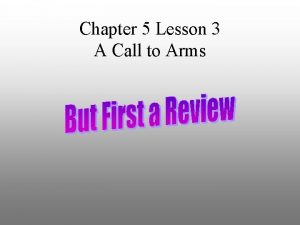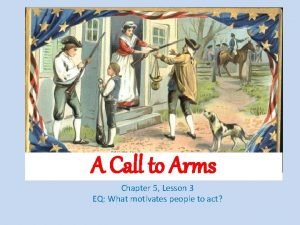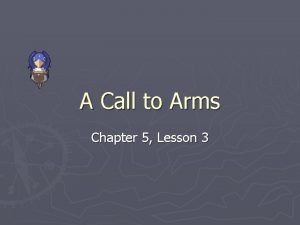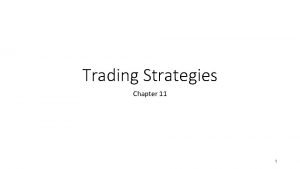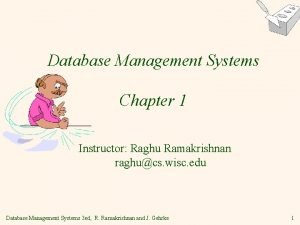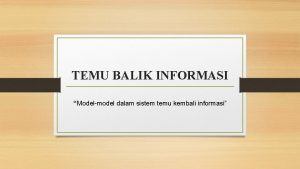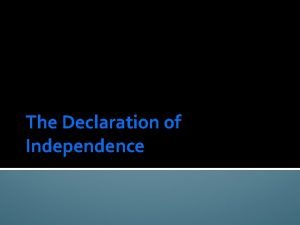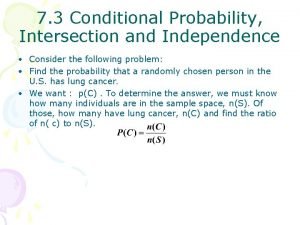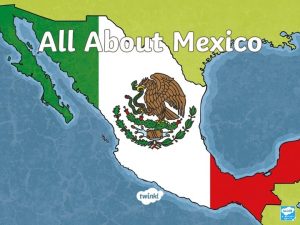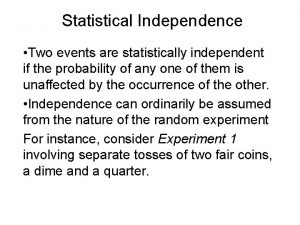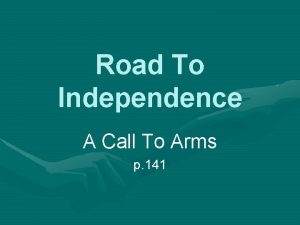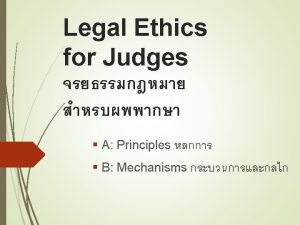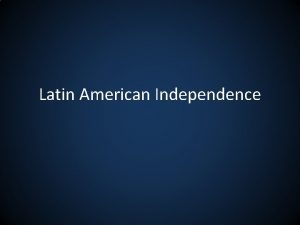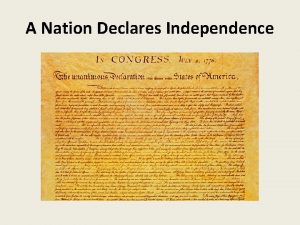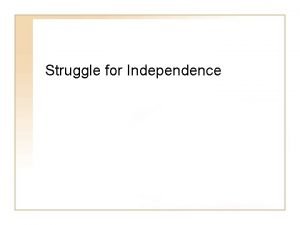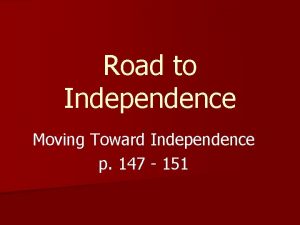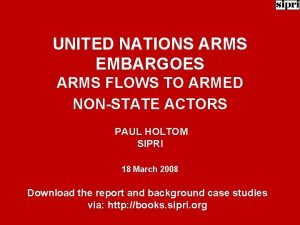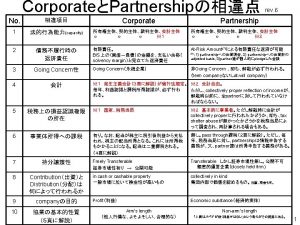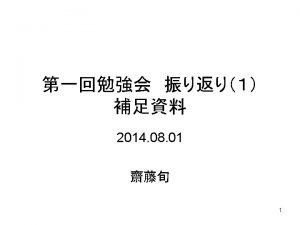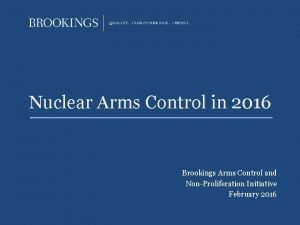Road To Independence A Call To Arms p














- Slides: 14

Road To Independence A Call To Arms p. 141

The Continental Congress • Colonial leaders realized they needed the colonies to act together in their opposition to British policies. • In Sept. 17744, 55 men arrived in Philadelphia to establish a political body to represent American interests and challenge British control. • The men were sent as delegates from all the colonies except Georgia. • This new organization was the Continental Congress.

Delegates to Congress • Major political leaders attended: –MA: Sam Adams and John Adams –NY: John Jay –VA: Richard Henry Lee, Patrick Henry and George Washington.

Decisions of the Congress • First, they drafted a statement of grievances calling for the repeal of 13 acts of Parliament passed since 1763. • They declared these laws violated the colonists’ rights. • They voted to boycott all British goods and trade. • They endorsed the Suffolk Resolves – resolutions put together by people of Suffolk County, MA.

The First Battles • Towns formed militia’s to fight against the British. • Minutemen boasted they would be ready to fight in a minute.

Britain Sends Troops • King George announced to Parliament that New England colonies were “in a state of rebellion” and “blows must decide” who would control America. • Sir Thomas Gage had instructions to take away the weapons of the MA militia and arrest the leaders. • Gage learned that the militia was storing arms and ammunition at Concord, near Boston. • He ordered sent 700 troops under Francis Smith to Concord.

Alerting the troops • Paul Revere and William Dawes were alerted by 2 lights in the steeple of the North Chapel in Boston that troops were forming rank and beginning to march in Boston Common. • They rode to Lexington to warn Sam Adams alerting minutemen along the way.

Fighting at Lexington and Concord • After marching all night, the redcoats reach Lexington at dawn. • At the center of town they found 70 minutemen ready to fight. • A shot was fired, and then both sides let loose with an exchange of bullets. • This was declared as the “shot heard ‘round the world” by poet Ralph Waldo Emerson in The Concord Hymn. • In the end, 8 minutemen died.

Fighting at Lexington and Concord • The British troops continued marching to Concord. • When they arrived, they discovered most ammo and gunpowder had already been removed, but they destroyed the remainder. • The minutemen were waiting at the North Bridge. • In the end, at least 174 redcoats were wounded and 73 died.

More Military Action • After the battles at Lexington and Concord, Benedict Arnold raised a force of 400 to seize Fort Ticonderoga on Lake Champlain. • Fort Ticonderoga was rich with military supplies. • Arnold joined with Ethan Allen’s forces, the Green Mountain boys, and caught the British by surprise. The British surrendered. • Later Arnold later conspired to surrender West Point to the British. Arnold became an officer in the British army.

Building Forces • After the battles of Lexington and Concord, calls for volunteers to join the militia were sent out. • Both the American and British troops waited nervously for several weeks for the other to make the next move.

The Battle of Bunker Hill • In June 1775, about 1, 200 militia men set up fortifications at Bunker Hill and nearby Breed’s Hill, across the Boston harbor. • This was a strategic location because it was a high point overlooking the water. • The British knew they must drive the American forces from their. • The British forces charged up the hill. • American colonel, William Prescott, knowing the American army was low on ammunition, ordered, “Don’t fire until you see the whites of their eyes. ”

The Battle of Bunker Hill • When the Americans opened fire, the British retreated. • The British charged 2 more times, and the American army was forced to surrender when they ran out of ammunition. • British won, but over 1, 000 redcoats were dead or wounded. • Britain realized defeating the Americans would not be easy.

Choosing Sides • With the battle, people needed to make a decision on which side to take. • Loyalist – Colonists who remained loyal to England. • Patriot – Colonists who fought against Britain for independence.
 Lesson 3 a call to arms
Lesson 3 a call to arms Chapter 5 lesson 3 guided reading
Chapter 5 lesson 3 guided reading Chapter 5 lesson 3 a call to arms
Chapter 5 lesson 3 a call to arms Paved road vs unpaved road
Paved road vs unpaved road Reverse protective put
Reverse protective put Option a option b
Option a option b Gartner call recording magic quadrant
Gartner call recording magic quadrant Latin american peoples win independence
Latin american peoples win independence Logical data independence in dbms
Logical data independence in dbms Binary independence model
Binary independence model Declaration of independence sections
Declaration of independence sections Break up letter declaration of independence
Break up letter declaration of independence P(a given b) formula
P(a given b) formula Cry of dolores
Cry of dolores Statistical independent events
Statistical independent events
